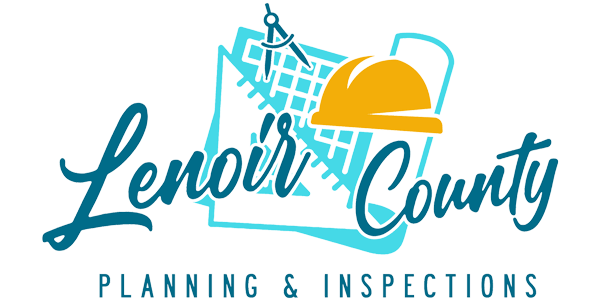PLANNING & INSPECTIONS DEPARTMENT
QUICK LINKS: Planning & Inspections Home | Frequently Asked Questions | Subdivider's Checklist | Fee Schedule | Apply for Permits | Harvey Parkway Area Study | Floodplain Information
QUICK LINKS: Planning & Inspections Home | Frequently Asked Questions | Subdivider's Checklist | Fee Schedule | Apply for Permits | Harvey Parkway Area Study | Floodplain Information
FEMA – FEMA Flood Map Service Center
The FEMA Flood Map Service Center (MSC) is the official public source for flood hazard information produced in support of the National Flood Insurance Program (NFIP). Use the MSC to find your official flood map, access a range of other flood hazard products, and take advantage of tools for better understanding flood risk.
Flood NC – flood.nc – North Carolina’s Flood Information Center
The nerve center of North Carolina Flood information. This website can help you find information on property risks, floodplain management, flood warnings and more. Also, FLOOD NC has links to other websites with flood related info. You can look up a particular address here to see the Flood Risk Profile of that specific address.
RISEE – Eastern Carolina Regional Resilience Portfolio | RISE | ReBuild NC
Regions Innovating for Strong Economies & Environment (RISE) is developed by a partnership between NCORR and the NC Rural Center, RISE aims to support resilience primarily in the storm-impacted regions of North Carolina. There is an ongoing multi-phase effort including a forward-looking vulnerability assessment, the identification of 5-10 high-priority projects and a list of the actions needed to implement each proposed project. A diverse stakeholder partnership is guiding the project to ensure that the scope of work reflects local priorities.
Neuse Mitigation Plan – Download (nc.gov)
This 2020 document discusses a Hazard Mitigation Plan for the Neuse River Region of North Carolina including Lenoir County.
Information available in the links below:
FloodSmart | The National Flood Insurance Program
The NFIP provides flood insurance to property owners, renters and businesses, and having this coverage helps them recover faster when floodwaters recede. The NFIP works with communities required to adopt and enforce floodplain management regulations that help mitigate flooding effects.
Flood Insurance | FEMA.gov
The National Flood Insurance Program (NFIP) is managed by the FEMA and is delivered to the public by a network of more than 50 insurance companies and the NFIP Direct. This FEMA WEBSITE is a one stop shop for information on mitigation, insurance and knowledge on flooding as well as other emergency situations.
More information available at North Carolina Flood Insurance Program.
Learn about elevating your home here.
Learn more about retrofitting your home in Part IV of this document.
A determination of “substantial damage” applies to a severely damaged home or other structure in a Special Flood Hazard Area regardless of the cause of damage
If the cost of repairing the structure is 50% or more of its pre-disaster market value, it is considered substantially damaged. Land value is not a consideration; the determination is based strictly on the value of the damaged structure.
Rebuilding a substantially damaged structure in a floodplain requires the property to be brought into compliance with local floodplain management regulations. Come to the inspections department to get the necessary permits.
Local building officials and floodplain managers will make the substantial damage or substantial improvement determination
Substantial Improvement – If an improvement costs 50% or more of the property’s value prior to the improvement, then the improvement is considered substantial and must comply with the local floodplain management regulations similarly to the substantial damage determination
Flood Damage Prevention Ordinance – 2020.pdf – Google Drive
PROTECT YOUR PROPERTY FROM FLOODING (fema.gov)
“While you can’t prevent a natural disaster from happening, there are ways to secure your property to minimize damage and keep your home and your future safe” – FEMA Brochure
FIMAN – NC Flood Inundation Mapping and Alert Network
Real-time gage information where users can see current water levels and,
where available, flood height predictions:
This web site provides real-time data on stream elevation, rainfall and weather parameters from over 550 gages across North Carolina, including in Lenoir. Some sites may be rain or stage gages only while some may have weather data available. Many of these gauges are managed by the Division of Emergency Management (NCDEM) while some are operated by local government agencies and private organizations. Additionally, gauges from the U.S. Geological Survey are included in this network.
FRIS – Flood Risk Information System (nc.gov)
The Flood Risk Information System (FRIS) contains digitally accessible flood hazard data, models, maps, risk assessments and reports that are database driven. This site also provides geospatial base map data, imagery, LiDAR data, along with hydraulic and hydrologic models that are available for download and use. The North Carolina Floodplain Mapping Program has made every effort to insure accuracy of this information.
**EC by year → a list of addresses with elevation certificates**
To get a copy of or information about an elevation certificate, email Adam Short at adam.short@lenoircountync.gov or come by the Planning and Inspections office at 101 N. Queen Street Kinston, NC 28501 during business hours.
For More information on Flooding and how to prepare for it see this folder of educational material prepared by FEMA
Please direct any further questions to the Floodplain Administrator Adam Short at adam.short@lenoircountync.gov or at 252-559-2260.
Lenoir County Emergency Services also can provide important information on flooding. Check out their webpage here.

Lenoir County Planning & Inspections Department
Phone: 252-559-2260
Fax: 252-559-2261
Physical Address:
101 N. Queen Street
Kinston, NC 28501
Mailing Address:
PO Box 3289
Kinston, NC 28502
Hours of Operation:
Monday – Friday: 8:00am-1:00pm, 2:00pm-5:00pm